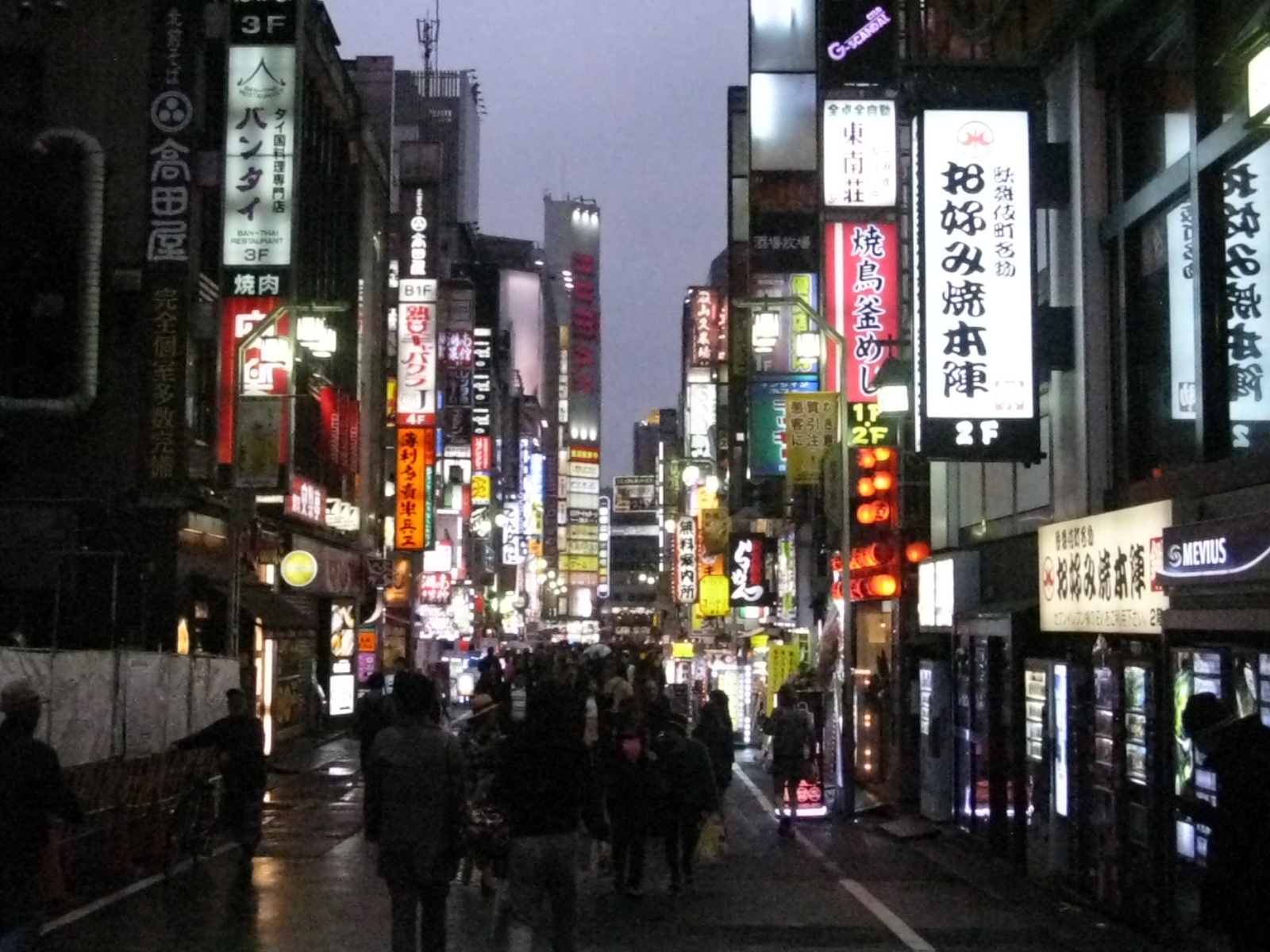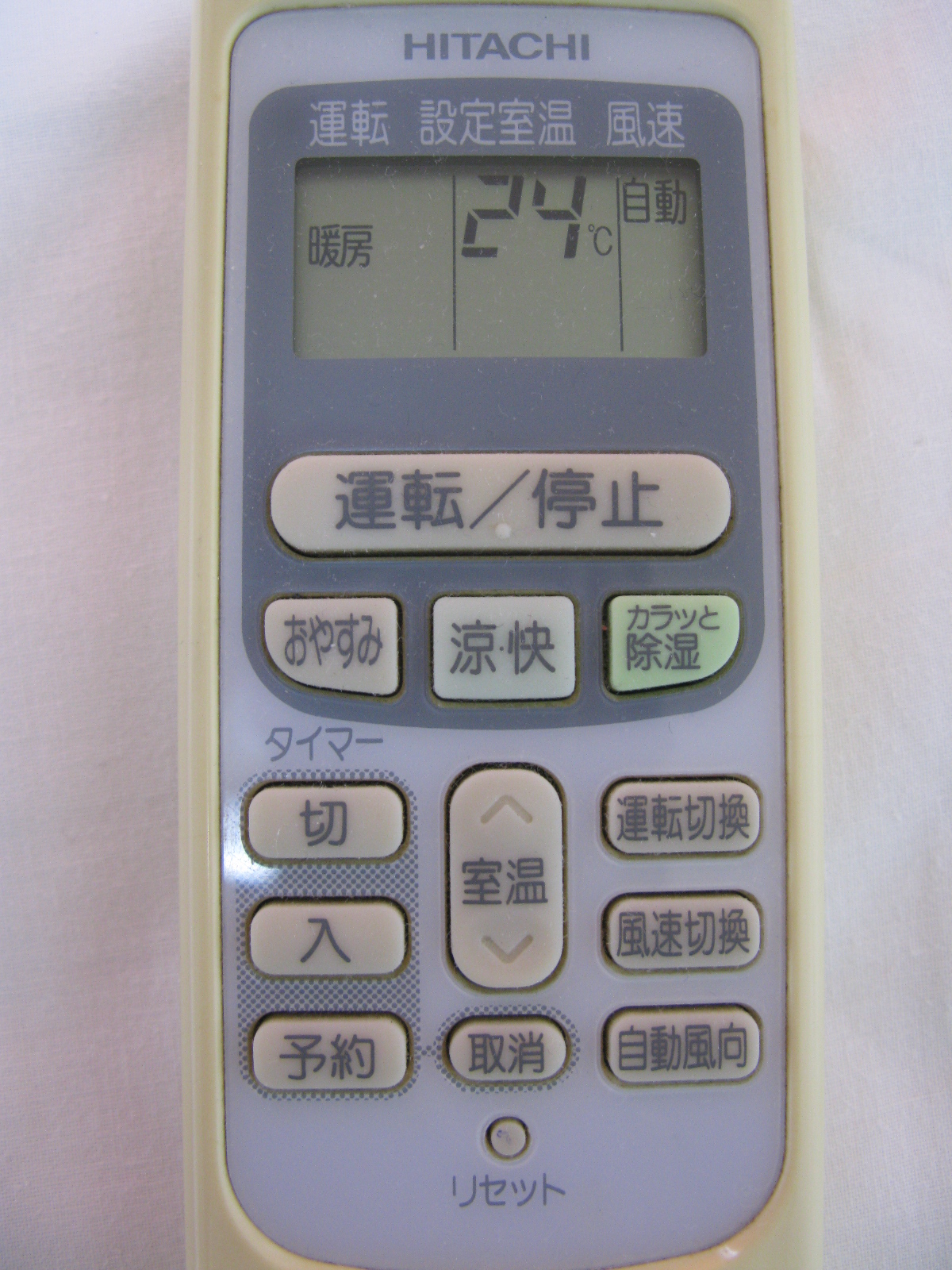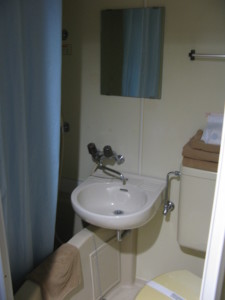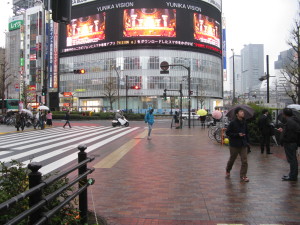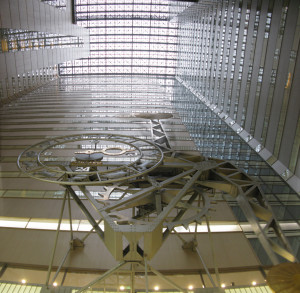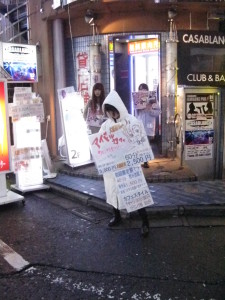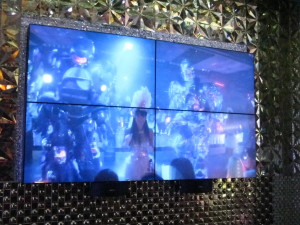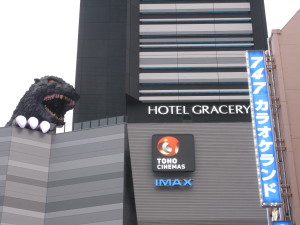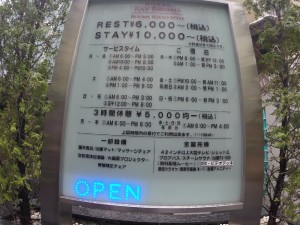Having not finally got to bed until 02:30, we were not best pleased to have the manageress banging on our door demanding payment before we were even dressed. I explained that we weren’t up yet and anyway would need to find a cashpoint first – her response was to demand to know by what time exactly this would be achieved! Hmm. So we had coffee and went in search of money and breakfast, both needs being met by a 7-11 just down the road. The cashpoint even spoke to us in English (and I mean actually spoke, as well as giving screen instructions in English).
Despite our rude awakening, we decided to see if we could stay at the J Residence for the whole two weeks, rather than having to move to the hotel in another part of Tokyo for week 2. Our room was not as small as I had feared, and the kitchen area (aka the passage to the door) was decently equipped with a sink, single gas ring, microwave, electric rice cooker, electric kettle, saucepan, frying pan, cutlery and crockery. With 2 single beds, a desk/table, a wardrobe and two folding dining chairs, we really had everything we needed. A miniature vacuum cleaner reinforced the notice telling us that there would be no housekeeping service (which was fine by us – there were washing machines on the roof for clean towels).
The bathroom was the tiniest I have ever seen, with a basin and miniscule bathtub moulded out of the same sheet of acrylic as the floor – only one mixer tap served both, and the shower head. The fact that the internet was wired was no problem for us as we had the portable router, and the heating function of the AC worked well (once we’d figured out the Japanese-labelled buttons on the remote). It was all a little dated and shabby but, for £42 a night in central Tokyo, right next to a subway station, it was a steal. People live in smaller places than that in Tokyo, and probably for not much less money. In fact, I suspected that the J Residence was originally residential as there were postboxes in the lobby.
We weren’t optimistic as there was no availability showing on booking.com, so it was a very pleasant surprise when the manageress said we could stay (once we’d paid she’d become much friendlier) – peering over her shoulder at the reservations screen, I could see that she could juggle the bookings to free up our room. Result!
Next task was a shinkansen (bullet train) ticket for Kyoto 2 weeks hence. We could have got one from Shinjuku station, possibly even from a machine, but we wanted a Platt Kodama, a particular kind of advance purchase (ie cheaper) ticket, and we specifically wanted seats on the right hand side (for the best Mt Fuji views), so we decided to find the Shinjuku branch of JR (Japanese Railways) Tokai Tours, which was beyond the railways station – their website was in English so we thought the chances of them speaking it were reasonable.
The walk to Shinjuku station took us along Shokuan Dori enabling us to check out our local shops and restaurants on the way. As we planned to be mostly self catering we were happy to find a couple of small supermarkets, but a bit shocked at the price of fruit and vegetables. Butter and cheese were also expensive (no surprise), but most other things seemed cheaper than in the UK, especially fish. Spirits were pretty cheap too, although beer was almost £1 a can. The restaurants were also much cheaper than I expected, with bowls of ramen noodles going for £4-5. However the plastic models (plastic models of menu items being a common feature of cheap eating places) clearly showed a juicy slice of roast pork in every dish – with a meat averse husband, they were off our menu, sadly. After 17 months in the tropics with only a month in mostly balmy Kathmandu as respite, the weather in Tokyo was a shock to the system. It rained incessantly for the first two days – not heavily, but it was cold. We were glad of the closed shoes and long sleeved tops that we had bought in Bangkok – layered with a couple of other tops, a fleece, and our pacamacs they kept our bodies warm enough, but we seriously considered buying gloves.
Skirting the station, which seemed to be enormous, with thousands of people in the surrounding streets, we entered an area of anonymous high rises, eventually tracking down the one that housed JR Tokai Tours. Its vast atrium was home to an enormous water clock and, apart from a few cafés and restaurants on the ground floor, it seemed to be an office building – an odd place to put a tourist-oriented travel shop. Nevertheless, we were efficiently and enthusiastically sold our required ticket by a young man who seemed pleased with the opportunity to demonstrate his fluency in English. By now we were tired and hungry (lunch having been overlooked), but we decided to walk back rather than take the subway, as we still needed to buy supplies.
It was just getting dark, and the rain heavier, as we cut through the back streets north east of the station. This is Shinjuku’s main nightlife area, and the neon was impressive. Dancers flitted across a huge video screen that wrapped around the curved Yunika Building. The noise and flashing lights of crowded pachinko parlours spilled onto the pavement. Restaurant touts called and beckoned passers by to check out their menus. A high rise hotel was being attacked by a life sized Godzilla, its head and arms emerging from the roof of the adjacent cimema. We stood for a while transfixed by a large video screen advertising a robot show – think Folies Bergères minus the feathers but with gigantic robotic dinosaurs and things whizzing around on zip wires. Sadly the £35 per head admission put it out of our budget.
Further from the station we entered the Kabukicho area, which may be notorious to the Japanese as a seedy red light district but most foreign city dwellers would laugh at that description. During the day the only hint is a number of hotels advertising “Rest or Stay”, with rates posted for all sorts of odd timespans. In fact these ‘love hotels’ are also used by married couples wanting to get away from overcrowded homes shared with extended families, and by people making last minute decisions to stay in central Tokyo after an evening of alcoholic over-indulgence. The area’s other identity as Koreatown is more noticable, with kimchi and other Korean goodies sharing the supermarket shelves. Now that it was dark there were smartly dressed men loitering on corners who we guessed were touts for unseen girlie bars, but foreigners are not legally allowed in such places so they had no interest in us. Finding ourselves at Higashishinjuku subway station more by accident than design, we quickly nipped back to the supermarket to pick up some basics (bread, butter, oil, eggs, salt and OJ and beer) and hit the 7-11 again for dinner – one rice ready meal to share plus some takoyaki (octopus dough balls – much nicer than they sound!). Then it was back to the welcome warmth of our little flat, feeling a little like I had just visited some kind of theme park.


